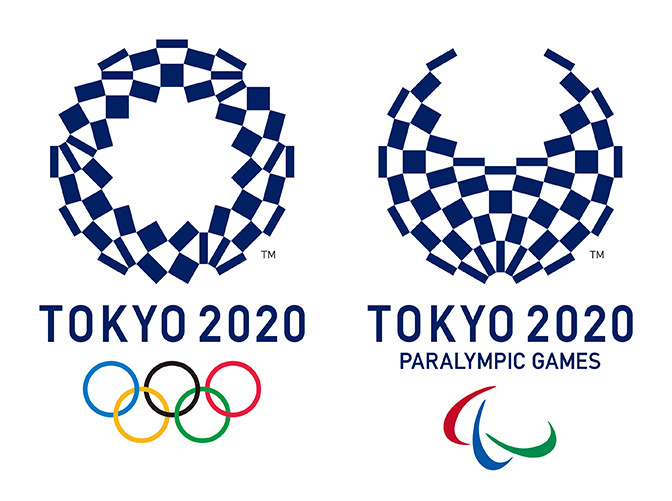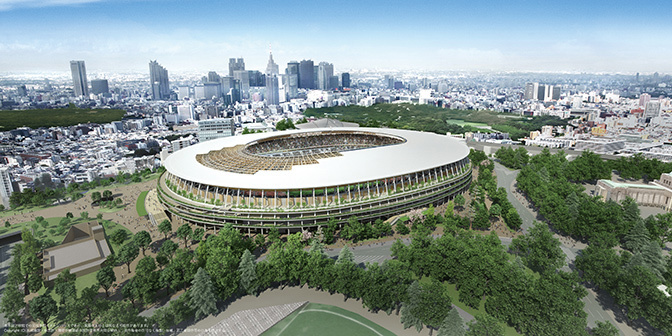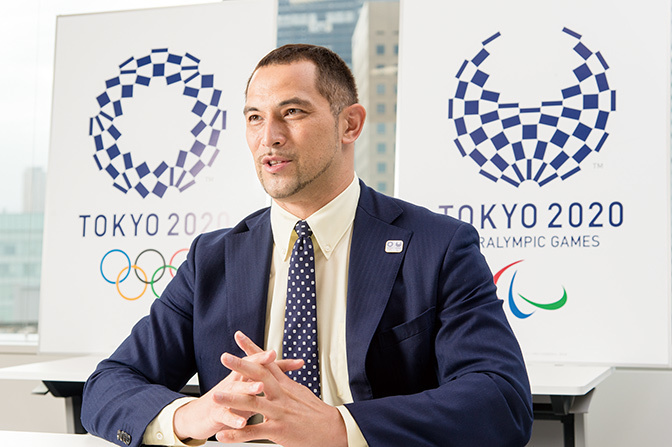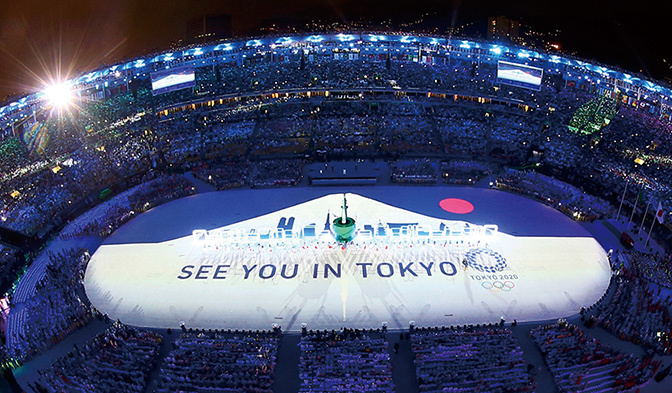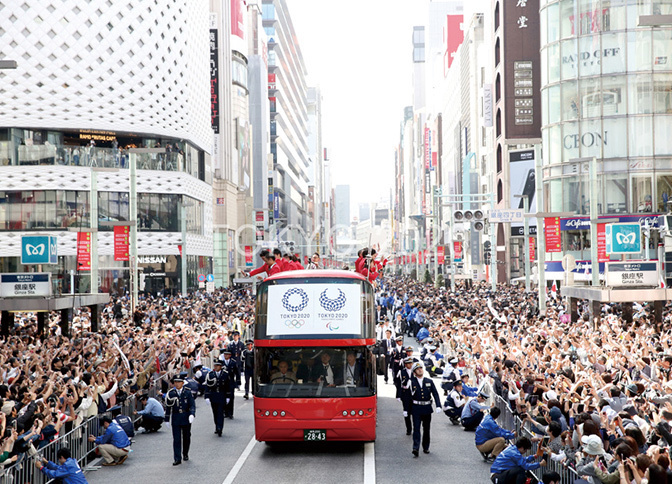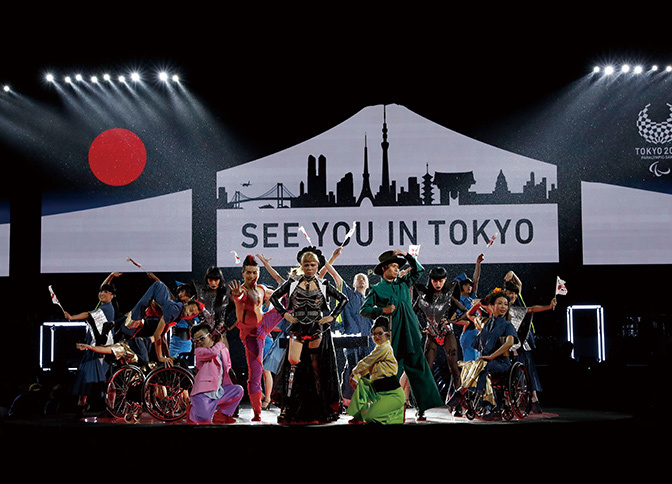The Tokyo Olympic and Paralympic Games will be held just four years from now in 2020. The Tokyo Olympics will consist of 33 events; five sports have been newly added, including baseball, softball, and skateboard. The Paralympics will consist of 22 events.
Tokyo will be hosting the Games for the second time, the first having been in 1964. The Tokyo Organizing Committee has proclaimed three basic concepts as its vision for the Games: “Achieving Personal Best,” “Unity in Diversity,” and “Connecting to Tomorrow.”
The hammer thrower Koji Murofushi, an Olympic gold medalist who has participated in four Olympic Games, has been appointed sports director of the Tokyo Organizing Committee. “Unlike world championships for a single sport,” he says, “the Olympics and Paralympics feature many sports going on at the same time. Athletes compete fairly in optimal venues and are watched by people around the world. Furthermore, the athletes live together in the Olympic Village; this gives rise to interaction among them transcending sports and nationalities. Since these are the greatest attractions of the Olympics and Paralympics, the first priority for the organizers is to arrange venues and an Olympic Village to be proud of, working in tandem with related organizations and individuals.”
The official emblems for the Tokyo Olympic and Paralympic Games in 2020 feature three different rectangular shapes, symbolizing the message of “unity in diversity” of nationality, culture, and thought.
Credits:Courtesy of Tokyo 2020
New venues are being constructed for the Tokyo Games in 2020. The New National Stadium will combine a traditional Japanese timber structure and a hybrid structure taking advantage of the merits of steel-frame construction. Spectators wil l be greeted by a harmonious Japanese-style space enveloped in timber.
Credits:Design Works and Construction Works of Taisei Corporation, Azusa Sekkei Co., and Kengo Kuma and Association JV/Courtesy of JSC
From the point of view of the Paralympics, it is also necessary to enhance accessibility for all athletes and spectators. “Tokyo is one of the leading cities in the world in terms of the development of its public transport infrastructure, including its subway network, which stretches far and wide in all directions,” Murofushi says. “But in preparation for the Tokyo Games in 2020, it will become an even more accessible and inclusive city for all people.”
Thanks to the smooth operation of this year’s Olympic and Paralympic Games in Rio de Janeiro, an increased number of new world records were set. At the closing ceremony for the Rio 2016 Olympics Japan conveyed its changing image and expectations for the Tokyo Games in 2020 with an appearance by Prime Minister Shinzo Abe as the character Mario from the Super Mario video game series and an impressive performance, fusing state-of-the-art technology and dance. “At the closing ceremony in Rio we expressed the image of a changing Japan,” Murofushi comments enthusiastically. “We want people around the world to see the new Japan at the Tokyo Games in 2020.”
During his 26-year career as an athlete, Murofushi saw firsthand how foreign athletes praised the high level of organizational competence at international tournaments held in Japan. “The Olympics and Paralympics are a special stage for athletes,” he says, “a sports festival that takes place just once every four years. Smooth and attentive management of the events is the most important factor in terms of enabling the athletes to concentrate on their sports with a sense of security and achieve results. The Japanese are good at smooth and reliable management, so I firmly believe that the Tokyo Games in 2020 will be ‘athlete-first’ games—in other words, games where athletes can compete with a solid sense of security.”
At the Tokyo 2020 presentation performance held during the closing ceremony of the Rio Olympics, the words “See You in Tokyo” were firmly imprinted in the minds of people around the world.
Credits:Photo by Reuters/Aflo
From his standpoint as an Olympian, Murofushi also speaks of his new hopes relating to spectator experiences in the broad sense, including broadcasting. “At the venues,” he says, “there are various experiences that can’t be fully conveyed by broadcasting—sounds, for example.” In hammer throwing, there’s the sound of the wire as it cuts through the air. In goalball, a Paralympic event, there’s the sound of bells tinkling quietly at the venue. Murofushi hopes that means will be found by the time of the Tokyo Games in 2020 to convey the world being experienced by athletes to spectators even more realistically. “We can make use of the latest technology, like virtual reality,” he says. “And from the perspective of sports presentation, I want spectators at the venues to be able to have experiences of a sort that they have never had before.”
The Tokyo Organizing Committee aims to provide the very best stage for all participants. Japan is moving steadily forward toward hosting a sophisticated sports festival in four years’ time that will truly befit the “made-in-Japan” label.
Around 800,000 people lined the streets to watch the homecoming parade of athletes who won medals in Rio, held in Tokyo on October 7, 2016. Tokyo is already warming up to host the Games in 2020.
Credits:Photo by Tokyo 2020/Shugo Takemi































































































































